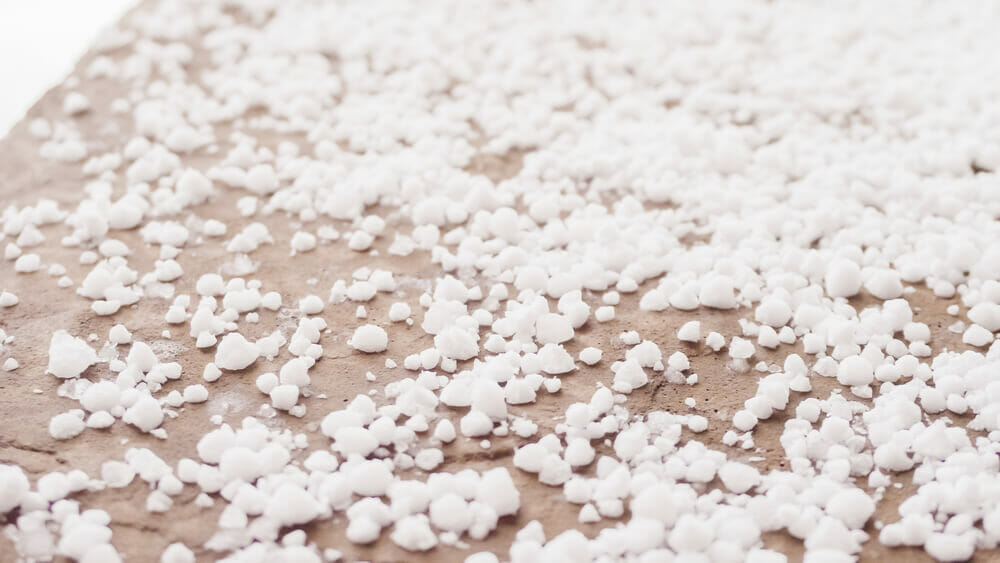April showers bring May flowers…and huge costs from hail damage from spring and summer storms. As with most maintenance issues, prevention is key. As a business owner, you keep up-to-date insurance policies, repair and maintain your structure, and address any issues as they arise. You get regular roof inspections and have implemented waterproofing and weatherproofing techniques. When it comes to Mother Nature, though, there are no guarantees. If you happen to be in the path of a vicious spring storm, hail damage on a commercial roof can be costly, and fixing it can be a headache. Here are seven steps for fixing hail damage on a commercial roof.
1. Determine the Extent of the Damage
Once the clouds have passed, you’ll want to survey the damage on the roof itself. Take all necessary precautions when making the initial inspection. If additional storms are in the forecast or the sun is setting, you may want to wait until a more opportune time to view the damage.
Once you have eyes on the roof, you’re looking to classify the type of hail damage the storm caused. An insurance professional will verify this assessment, but knowing the extent of the damage upfront will help you start to craft a strategy for repair and start researching professionals to help you get the job done right. There are a few signs of commercial roofing hail damage to keep your eyes open for when you’re surveying the structure.
2. Look for Circular Dents
This classic damage pattern can be seen on a variety of commercial roofing materials, including metal, wood, or composite materials. The dents are often arranged in a scattershot pattern, although there may be sections of the roof that have more damage than others. A circular indent indicates the presence of large hail and can range in diameter from a few centimeters to several inches in length, depending on the size of the hail.
3. Check for Missing Shingles
Shingles that are missing, askew, or not fully secured is also a sign of hail damage. Depending on the material of the shingles, inclement weather may have had the force to remove small pieces of roofing or the damage may cover the entire structure. If roofing material is darker in color, it can be difficult to determine if small sections are missing or damaged. When possible, touching material with your hands can indicate the presence of damage, even if it’s not immediately apparent to the naked eye.
4. Photograph any Black, Red, Yellow, or White Markings
Some roofing materials are able to withstand an onslaught of weather, and the only signs of structural damage may be markings from hail impacts on the commercial roofing materials or shingles themselves. Different materials show damage in different ways, and colored streaks of black, red, white, or yellow markings could indicate damage from a sudden storm.
5. Contact Your Insurance Professional
Once you’ve viewed the damage, your next call should be to your insurance professional. Having expert eyes view the damage can give you a better idea of the scope of the damage and the possible cost of repairs. Providing the assessor or agent with photographic evidence may help your claim be processed more quickly, which is essential for getting repairs completed in a timely manner.
6. Don’t Leave Commercial Roofing Damage Unaddressed
It’s important to remember that commercial roofs are not residential roofs. The cost of replacing even a small section of a commercial roof tile can be much higher than a large section of a residential roof. Commercial and industrial roofs are also subject to stricter building and safety codes. The cost and complexity can make business owners hesitate when they consider replacement. Letting even minor damage linger through a second cold winter or storm season could cause even greater costs in the long run.
7. Partner With a Company that Specializes in Commercial Roofing
Companies that mostly handle residential roofing don’t have the tools, materials, and experience to patch, replace, or repair commercial roofing. While your insurance company may give you suggestions on what company to contact, you’ll need to do careful research to make sure the contractor you work with can properly repair your commercial roofing. Unaddressed roofing issues can lead to moisture ingress, mold issues, or high heating or cooling costs due to escaping air.
Maxwell Roofing & Sheet Metal, Inc. has years of experience installing, maintaining, and repairing a variety of commercial roofs. Schedule a call with us today to learn more about how we can help protect your investment by maintaining your building’s longevity.

